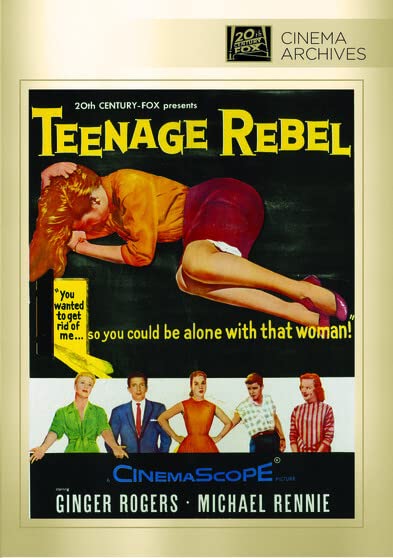
In the 1950s, a life-threatening menace began to rear its ugly head to all good, God-fearing, red-blooded Americans who valued their freedom. No, I’m not referring to the alleged peril Communism was supposedly trying to destroy us with – I’m talking about something far worse: teenagers. More specifically, the teenaged crowd who were busy bopping about in hula-hoops and poodle skirts at the drive-ins after drag racing in hotrods and downing numerous chocolate malts with their hamburger sandwiches, all the while greasing their hair back to the sound of that dreaded negro jazz beatnik music on the jukebox. Or something like that: the fact remains that the adults of the time were incredibly worried and annoyed by the fact that those damn kids were having fun without them.
Thus, a new genre – that of the Juvenile Delinquent (JD) flick – came to pass. In 1956 Fox tried to reach both the JD audiences as well as parents who were curious to learn more about the appeal of conical bras, were uncertain as to whether it was “teenage” or “teen-age”, or who just wanted to give their eyes a rest after watching that last 3D movie. Sadly, the misleadingly-titled Teenage Rebel really doesn’t cash-in on the JD bit. Instead, the film – the first CinemaScope feature to be filmed in black-and-white – tells the story of a spoiled bratty teenage bratling who comes to visit her estranged mum and step-dad for a few weeks. Inhabiting the roles of the otherwise-happy hubby and wife are Ginger Rogers and Michael Rennie, both of whom show of their dancing skills at one point or another (who knew Michael Rennie could get down and boogie so well?) here.
Other than that, Teenage Rebel doesn’t have much to go on. Young Dorothy (Betty Lou Keim, reprising her role from the Broadway play this flick was based on ) arrives, alienates everyone with her posh personality and apathy towards anything around her, Rennie pays the kids next door (Warren Berlinger and Diane Jergens, as the onscreen offspring of actress Mildred Natwick) to befriend the teeny terror, and – eventually – Dorothy realizes her mum isn’t as bad as she thought she was. That’s it, really. Nothing to see here, people. Please move along.
Interestingly, Keim and Berlinger later married and had four kids of their own together. Ironically, the three teenage stars of the feature were billed as “Three Stars of the Future” in both the credits and advertising; in reality, most were confined to minor television work (no pun intended), and Jergens managed to snag a part in the perennial favorite of bad movie lovers everywhere, Mesa of Lost Women. Also appearing are Louise Beavers (as the proverbial black maid all Southern Californian homes had during the ’50s, who were secretly hired to translate the lingo the kids were picking up from listening to the bongo music Dick Clark kept pushing on them, no doubt) and one-time starlet Lili Gentle, who somehow managed to get fifth-billing for a rather small part (I’m sure her marriage to future Fox head Richard D. Zanuck had nothing to do with it).
And now for the major disappointment. Though a CinemaScope title, the folks at Fox Cinema Archives didn’t bother scouring through their vaults for a widescreen copy of the film. Instead, this barebones Manufactured-on-Demand ditty presents the movie in a rather worn-looking and (more importantly) cropped presentation – with pan-and-scan that nearly gave me motion sickness in a couple of spots.
Bad call, people.